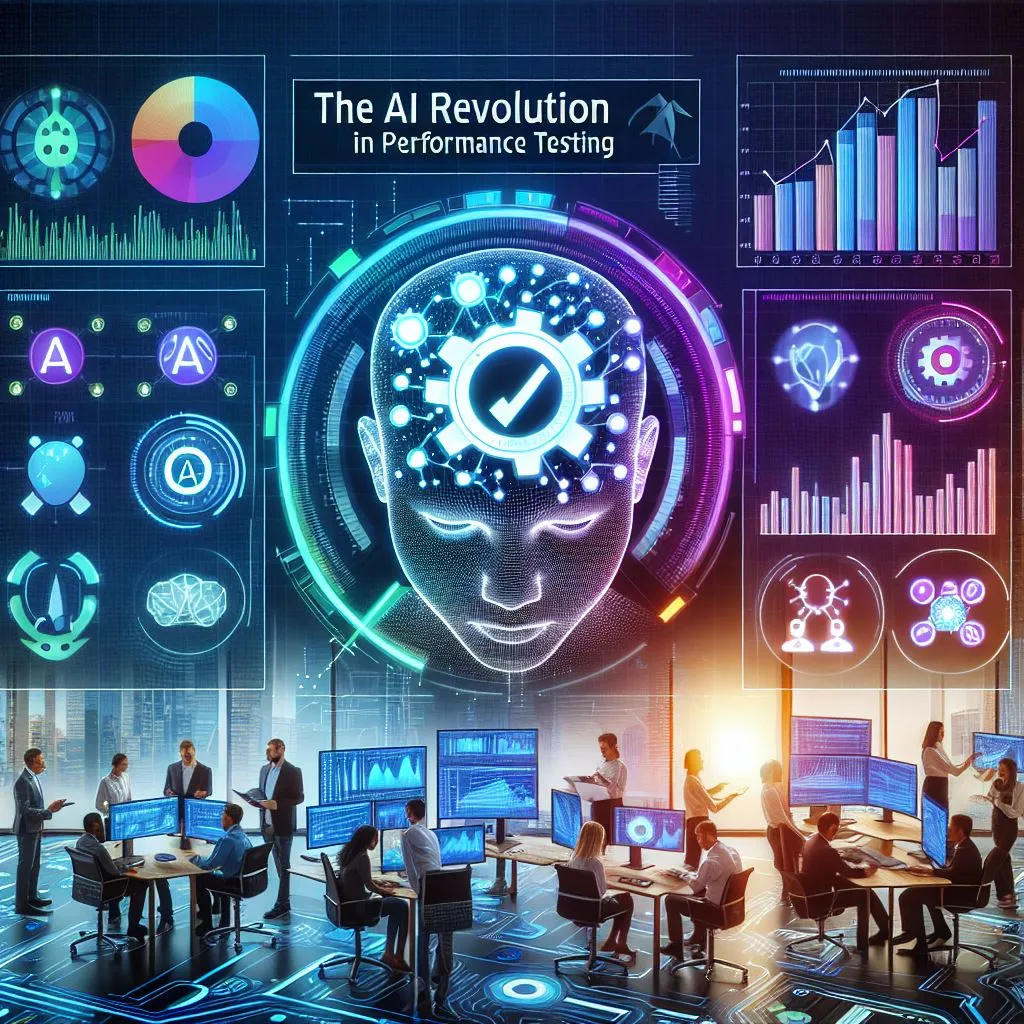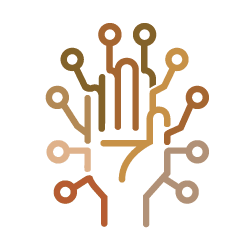
Introduction:
In today’s fast-paced digital world, performance testing is essential for ensuring applications meet user demands. Traditional testing methods, however, can be time-consuming and struggle to keep up with complex, evolving systems. AI is transforming performance testing by introducing capabilities that go beyond simple automation. AI-powered tools make it easier to test software reliability in smarter, faster, and more accurate ways. They do this by using predictive analytics, finding problems in real time, and adaptive load testing.
This blog delves into how AI is revolutionizing performance testing, making it more efficient, proactive, and aligned with modern development needs.
Performance Testing in Modern Development
In today’s competitive landscape, where user expectations are high, performance testing plays a pivotal role in building software that meets reliability and quality standards. Slow or unresponsive applications can lead to user dissatisfaction, decreased revenue, and reputational damage. By identifying and resolving performance issues early, performance testing helps maintain user engagement, supports scalability, and builds trust in the software.
Challenges of Traditional Performance Testing
Despite its importance, traditional performance testing faces several challenges that can limit its effectiveness in modern development environments:
- Manual and Time-Consuming
Traditional performance testing often requires a significant amount of manual setup, script writing, and test configuration. Preparing realistic test scenarios and configuring test environments can take considerable time, slowing down the development cycle especially in agile or DevOps workflows. - High Cost and Resource Intensive
Traditional performance testing requires dedicated hardware and software resources to simulate real-world load conditions. These setups can be costly to maintain, and scaling them to simulate larger user bases demands even more resources, both in terms of infrastructure and personnel. - Difficulty in Simulating Real-World Conditions
Creating accurate test conditions that mimic actual user behavior and fluctuating network conditions is complex. Many times, traditional testing tools have trouble simulating different user scenarios. This means that there may be gaps in testing that don’t show potential performance problems or bottlenecks in the real world. - Challenges in Analyzing Large Volumes of Data
Performance testing generates vast amounts of data, from response times to resource utilization metrics. Traditional analysis methods can struggle to make sense of this data quickly and accurately, often requiring manual intervention to identify patterns or anomalies. - Limited Real-Time Monitoring and Insights
Most traditional performance testing tools are not designed for real-time monitoring, which limits the ability to detect and respond to performance issues immediately. As a result, teams may only uncover critical issues after testing is complete, rather than in real time.
These challenges highlight the need for a more efficient, adaptable, and intelligent approach to performance testing. This is where AI-driven testing solutions come into play, offering ways to automate and enhance testing processes to keep pace with modern development demands.
How AI is Transforming Performance Testing
Automated Test Script Generation and Maintenance
AI can generate and update test scripts based on application changes, greatly reducing the manual effort required to maintain tests. This ensures that performance tests stay current as applications evolve, enabling continuous testing without the need for constant human intervention.
Predictive Analytics for Bottleneck Identification
AI can analyze historical performance data to identify patterns and predict potential bottlenecks before they occur. AI-powered systems can spot patterns in how resources are used, how often transactions happen, or how long it takes for systems to respond. These patterns can alert teams to likely performance problems so they can fix them before they happen.
Real-Time Anomaly Detection and Root Cause Analysis
AI-powered monitoring systems can continuously analyze large volumes of data, detecting anomalies in real time. AI algorithms can identify abnormal patterns that might indicate a performance issue, often with greater accuracy and speed than rule-based systems. Furthermore, AI can assist with root cause analysis, correlating data points to pinpoint specific components or configurations that may be causing problems.
Adaptive Load Testing
Traditional load testing relies on predefined loads, but AI can dynamically adjust load parameters in response to real-time performance feedback. This adaptive approach ensures the system is tested under a range of conditions, offering more insight into its limits and behavior under varying levels of stress.
Self-Healing Test Environments
In AI-powered environments, self-healing mechanisms can automatically resolve minor issues that arise during testing, such as broken test scripts or failing connections. This minimizes interruptions, allowing tests to complete successfully and reducing the manual intervention required from the testing team.
Benefits of AI-Powered Performance Testing
- Scalability
AI makes it easy to scale up performance testing across various platforms, devices, and network conditions. - Improved Accuracy
By eliminating human errors and optimizing testing parameters, AI can provide more accurate test results. - Faster Test Cycles
Since AI-driven tools can perform repetitive tasks and generate insights quickly, they enable faster feedback cycles, which is particularly beneficial in agile environments. - Cost Efficiency
By reducing manual intervention and minimizing the number of required test cycles, AI can lower the costs associated with performance testing.
Here are some case studies of companies and tools that have successfully implemented AI in performance testing, showing tangible benefits such as improved test accuracy, reduced costs, and faster development cycles:
Netflix—AI-Driven Chaos Testing for Resilience and Performance
Netflix developed an AI-powered chaos engineering platform, “Chaos Monkey,” to introduce faults and simulate unpredictable conditions in real time. This AI-driven tool automatically tests the performance and resilience of services by dynamically creating scenarios that test system limits.
Facebook (Meta)—Predictive Analytics for Performance Optimization
Meta has implemented AI-driven predictive analytics to analyze historical performance data and identify potential bottlenecks. Their AI models monitor application performance across different platforms, predicting where issues may arise before they impact users.
Google—Adaptive Load Testing with Machine Learning
Google developed an AI-powered load testing tool that adapts test parameters in real time based on performance feedback. By using machine learning, the tool automatically adjusts load and stress levels, providing more accurate insights into how applications respond to different user loads.
IBM—Watson AI for Enhanced Root Cause Analysis in Cloud Performance Testing
IBM integrated Watson AI into its performance testing and monitoring processes. Watson analyzes massive data streams from cloud applications to detect anomalies and automatically performs root cause analysis, identifying underlying issues quickly.
These case studies illustrate how AI-powered performance testing tools not only save time and resources but also enable companies to deliver applications with greater reliability and performance, meeting the demands of today’s fast-paced, user-centered world.
Challenges and Limitations of AI in Performance Testing
Quality of Data
AI models rely heavily on data to make accurate predictions and analyses. If the data used for training the AI is incomplete, biased, or of poor quality, the AI’s results may be inaccurate, leading to false positives or missed issues.
Data Privacy and Security Concerns
AI-driven performance testing often involves processing large volumes of user data. For organizations dealing with sensitive information, there may be concerns about data privacy and compliance with regulations like GDPR or HIPAA.
Continuous Model Training and Maintenance
AI models require regular updates and retraining to stay relevant, especially in dynamic environments where application features evolve frequently. The continuous need for model maintenance can add to the overhead and complexity of using AI in performance testing.
Netflix Outage Affects Over 85,000 Users During Mike Tyson vs. Jake Paul Fight
Netflix experienced a significant outage late Friday (11/15/2024), affecting over 85,000 users across the United States, according to Downdetector.com. The disruption, reported around 10:35 p.m. ET, coincided with the highly anticipated boxing match between Mike Tyson and Jake Paul. The outage primarily impacted major cities like New York, Seattle, and Los Angeles, with some reports from other regions.
Top AI-Powered Tools Revolutionizing Performance Testing in 2024
Apache JMeter (with AI Plugins)
- Open-source tool for load and performance testing.
- It can integrate with AI-based plugins, like BlazeMeter, for enhanced analytics.
- It allows correlation and pattern recognition in test results using external AI tools.
Use Cases:
- Stress testing and load testing of APIs and web apps.
- It can be customized to incorporate AI/ML capabilities.
LoadRunner (by Micro Focus)
- AI-enhanced anomaly detection.
- It supports a wide range of protocols for performance testing.
- It integrates with predictive analytics to model system performance under future conditions.
Use Cases:
- Enterprise-scale performance testing.
- Continuous performance engineering.
BlazeMeter
- AI-assisted insights for API and performance testing.
- Integrates seamlessly with Apache JMeter.
- Real-time reporting and monitoring with intelligent trend analysis.
Use Cases:
- It automates performance testing in CI/CD pipelines.
- Scalability testing for cloud-native applications
Conclusion
AI is transforming performance testing by enabling faster, more accurate, and cost-effective solutions. Through automation and predictive analytics, AI helps identify bottlenecks early, ensuring scalable and resilient applications. Despite integration challenges, the benefits—reduced testing cycles, enhanced accuracy, and continuous optimization—make AI essential for modern software development. As AI evolves, its role in performance testing will continue to grow, driving faster, more reliable releases.











































































































































































































































